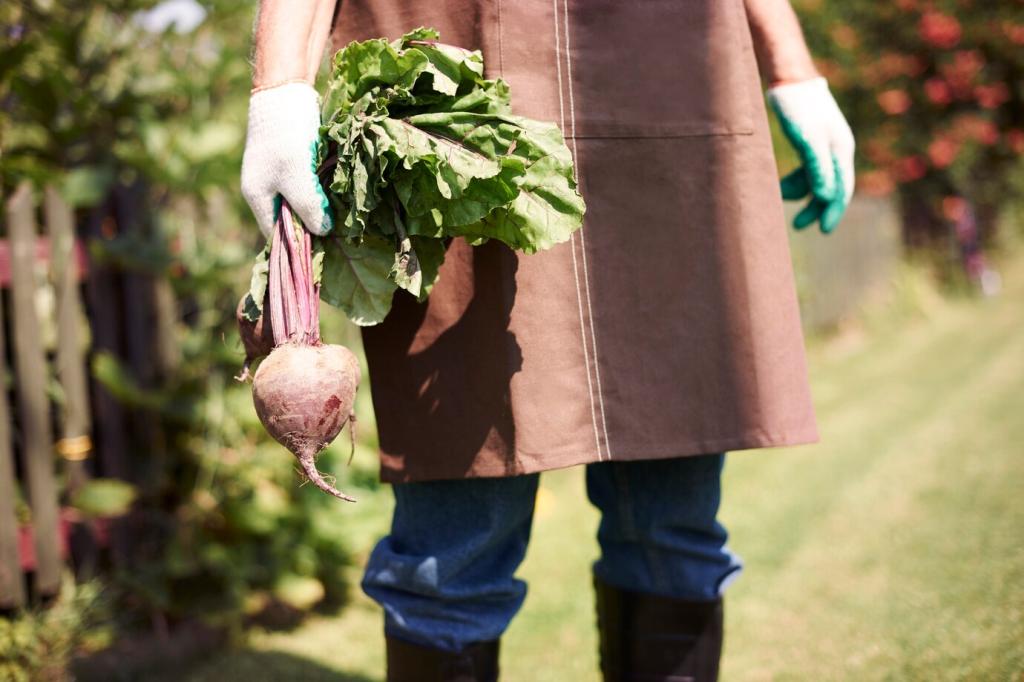
Building Raised Garden Beds for Flavorful Culinary Herbs
Chosen theme: Constructing Raised Garden Beds for Culinary Herbs. Welcome to your new flavor frontier, where well-built beds turn everyday meals into fragrant celebrations. We’ll plan, build, plant, and savor together—share your ideas in the comments and subscribe for fresh, seasonal herb inspiration.
Plan the Perfect Bed: Sun, Size, and Kitchen Proximity

Most culinary herbs thrive with six to eight hours of direct sun, especially Mediterranean classics like rosemary, thyme, and oregano. Watch the light across a weekend, note midday shadows from trees or fences, and comment with your observations so fellow gardeners can compare conditions.
Choosing Safe, Durable Lumber
Cedar and redwood resist rot naturally and look gorgeous without chemical treatments. Avoid railroad ties and unknown reclaimed timbers that might leach contaminants. If pressure-treated lumber tempts your budget, use modern, food-safe formulations and line interiors judiciously. What wood has worked longest for you?
Metal, Stone, and Composite Options
Galvanized steel beds assemble quickly, warm early in spring, and hold shape beautifully. Stone offers timeless charm and thermal stability but demands muscle power. Composites resist decay while mimicking wood. Mix aesthetics with practicality, then post photos of your chosen style to inspire others.
Assembly Details that Last
Use exterior-grade screws, corner brackets, and level foundations to prevent racking. Pre-drill to avoid splitting and consider capping rails for a tidy finish and comfy perch while pruning basil. Label corners with dates and share your build list; subscribers love a reliable hardware rundown.


Soil and Drainage: The Heart of Herb Health
Try a balanced blend: forty percent high-quality topsoil, forty percent finished compost, and twenty percent sharp sand for drainage. Many herbs prefer slightly alkaline pH; add crushed eggshells or a touch of garden lime cautiously. Share your ratios so we can compare regional successes.
Soil and Drainage: The Heart of Herb Health
Skip plastic liners that trap water. Instead, lay hardware cloth over the ground to deter burrowers, then landscape fabric only if weeds are persistent. Fill in lifts, watering each layer to settle. If heavy rains pool, consider raising sides or adding French drains. Tell us your climate.



Choosing and Pairing Culinary Herbs
Group rosemary, thyme, oregano, sage, and marjoram in the driest, sunniest corner. Give rosemary room to breathe and thyme edging to spill. Their shared love of lean soil simplifies care. Tell us which varieties flourish together in your region—and any surprising pairings you’ve discovered.
Choosing and Pairing Culinary Herbs
Basil, parsley, cilantro, and chives prefer richer soil and steadier moisture. Succession-sow cilantro to outpace bolting and pinch basil often for bushiness. Tuck in lettuces as quick companions. Share your best basil cultivars, and subscribe to get our monthly seed-starter reminders and spacing charts.

Seasonal Care, Protection, and Harvesting
Pinch, Prune, and Prosper
Regularly pinch basil tops before flowering to extend tender leaves, and lightly trim thyme after bloom to encourage compact growth. For woody herbs, avoid cutting into old wood. Share your pruning victories and mishaps—your story might save someone else’s rosemary from a hard reset.
Winter and Shoulder Season Strategies
Mulch roots of perennial herbs and set low hoops with row cover for frosty nights. In cold zones, pot up a sprig of rosemary to overwinter indoors. Track first and last frost dates, and subscribe for our zone-by-zone winterizing checklist. What’s your cold-weather ritual?
Pests, Problems, and Peaceful Solutions
Aphids, whiteflies, and powdery mildew happen—even to careful gardeners. Start with sprays of water, introduce ladybugs, and improve airflow. Avoid overfeeding nitrogen. Share your gentle remedies and favorite resistant varieties, and we’ll feature community-tested tips in an upcoming roundup for subscribers.
From Bed to Kitchen: Flavor Without Delay
Harvest after dew dries but before midday heat steals essential oils. A small basket by the back door makes grabbing thyme or chives second nature. Tell us your favorite morning ritual, and comment with one herb you reach for almost without thinking.
From Bed to Kitchen: Flavor Without Delay
Air-dry sturdy herbs like oregano and sage, freeze basil as pesto cubes, and pack parsley into ice trays with olive oil. Label jars with harvest dates. Share your go-to preservation tricks, and subscribe for our printable drying chart and freezer inventory template.


